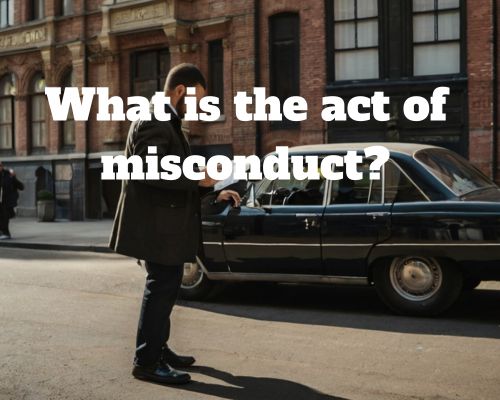“Misconduct in the workplace is a significant issue that demands attention. It is any wrongful, improper, or unlawful act motivated by an intentional purpose or indifference to the consequences. This can range from minor infractions like persistent lateness to severe offenses like theft or insubordination.” said Sherlock Holmes of Ali Private Investigator Tampa.

Acts of misconduct are defined by both written policies and the implied standards of a workplace.
These violations can lead to various consequences, from verbal warnings to termination of employment.
It is crucial to address misconduct promptly to maintain a professional and respectful work environment.
Dealing with misconduct efficiently helps prevent a toxic work culture where negative behavior is tolerated.
When addressed immediately, misconduct can be managed effectively, ensuring that standards are upheld and the workplace remains a positive and productive space.
Understanding Misconduct in the Workplace
Based on Ali Private Investigator Tampa, workplace misconduct involves behavior that disrupts harmony, violates company policies, and negatively impacts work performance and environment.
Such behavior can range from minor infractions to serious violations and requires careful identification and investigation.
Forms of Misconduct
- Minor Misconduct: This includes infractions like tardiness, absenteeism, and inappropriate workplace behavior.
These acts are not severe but can disrupt workplace harmony and productivity.
- Gross Misconduct: Severe violations like theft, fraud, violence, and sexual misconduct.
Actions in this category can lead to immediate termination and possibly legal consequences.
- Improper and Unlawful Conduct: Examples include harassment, discrimination, bullying, and sexual harassment.
These behaviors harm employees and can create a hostile work environment. Both punishment and preventive measures are critical for these acts.
Identifying and Investigating Misconduct
- Identification: You need to be vigilant about signs of misconduct.
Sudden drops in performance, dishonesty, absenteeism, and visible distress among employees can signal issues.
Investigation Process:
- Gathering Evidence: Collect documentation, witness statements, and other relevant proof.
- Intent: Understanding the intent behind actions is crucial for differentiating between minor and gross misconduct.
- Interviewing: Conduct interviews with involved parties to get a comprehensive view of the incident.
- Documentation: Properly document every step of the investigation process for transparency and legalities.
Maintaining thorough documentation and a clear investigation process helps in addressing misconduct efficiently and fairly.
Consequences and Handling of Misconduct
Responding to employee misconduct involves addressing both disciplinary actions and legal considerations.
It requires a clear understanding of the rules and processes in place to ensure fairness and accountability.
Disciplinary Actions and Processes
Dealing with misconduct begins with a thorough investigation to determine the facts.
Depending on the severity, consequences can range from verbal warnings to immediate dismissal.
- Verbal Warning: This is often the first step for minor infractions, serving as an official reminder of company policies.
- Written Warning: A formal notice given for more serious or repeated issues, providing documentation of the employee’s breach.
- Suspension: Temporarily removing the employee from the workplace to reflect on their actions, maintain order, or further investigate the incident.
- Immediate Dismissal: For severe misconduct, such as physical violence or fraud, termination of employment may be necessary.
Legal Implications and Employee Rights
Misconduct can lead to legal repercussions, influencing how you handle the situation.
It’s crucial to respect employee rights during disciplinary processes.
- Due Process: Employees must have an opportunity to respond to allegations before any decisions on penalties are made.
- Employee Rights: Ensure constitutional rights are upheld, not violating protections against wrongful termination or false arrest.
- Legal Consequences: Serious misconduct may involve criminal acts like theft or assault. This requires authorities like prosecutors and defendants to get involved.
- Accountability and Transparency: Document all steps taken to manage misconduct. This defends against potential legal challenges and upholds ethical standards.
Properly addressing misconduct includes balancing disciplinary actions with legal obligations. This ensures a fair and just process for all parties involved.